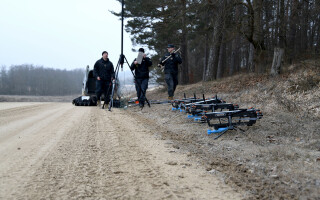Sec. Defense Carter approves final plans to fully integrate the military
OtherMarch 11, 2016
Secretary of Defense Ash Carter formally approved the final implementation of plans to integrate the military, as all combat positions are now open to women. The military services, including the U.S. Special Operations Command, followed suit to change an entire culture. Plans were turned in and change will happen. The true impact of this decision won?t be felt till 20 years from now, when the young men and women turn 18 and join a new military that is not biased by today?s views.
In a statement given by Secretary Carter, he says “When I announced my decision back in December to open all career fields to qualified women, I emphasized that the implementation of this change must be handled the right way, because the combat effectiveness of the world’s finest fighting force is paramount.”
Having reviewed their exceptionally thorough work, I am pleased all of the services developed plans that will effectively carry out this change and make us even better in the future,” he continues.
His plans, according to this statement, follow his seven guiding principles: transparent standards, population size, physical demands and physiological differences, conduct and culture, talent management, operating abroad, and assessment and adjustment.
Let me address the most important principles that stem from my own personal experience with the first and most important one being transparency. Women can and should be able to meet the same standards as men. I say this knowing that some jobs would have been closed to me because I know for a fact that I would not been able to meet those standards. And that’s a good thing.

In a written response by SecDef called "Moving Out on Women-In-Service" available to all to read, he states regarding this principle, “We found over the last few years that in some cases we were doing things because that’s the way we’ve always done them. For example, previously one of the tasks to earn the Army’s Expert Infantry Badge required soldiers to move 12 miles in three hours with a 35-pound rucksack, but it turns out that the rucksack weight was based on a World War II-era airborne study. It was the minimum weight required to prevent the rucksack from getting tangled in a jumper’s static line, and had nothing to do with the equipment required for paratroopers to fight with once they landed?—?let alone the modern equipment that infantry soldiers need to carry today.”
Because no one likes to run 12 miles with a 35-pound rucksack for the sake of our grandfathers – who we respect and love, but lets be realistic here. It might be fun to do it simply to build strength and be the best we can be, but there’s no need for obsolete training regimes when it’s not required.
Second are physical demands and physiological differences. Glad we can get this out there: we are all made different; the challenge is to find the strengths of that individual to fit a role that will allow an entire organization to succeed. How is that different than the corporate or any business world?
A female fighter pilot is more qualified for the job simply because of how she is made physically. There are also your athletes that can carry that 35-pound rucksack and sing along the entire time. Thanks to those beasts that make the rest of us wish we would just die on mile two.
And the last he mentions is conduct and culture, which he says “we must address attitudes toward team performance through education and training, including making clear that sexual assault or harassment, hazing, and unprofessional behaviors are never acceptable, and that everyone must be treated with the dignity and respect they deserve.”
The military has grown and developed its own culture. Like any, it has good, bad, and ugly qualities. We all want to be heard and respected – that core belief doesn’t start and end with our biological sex.
You’ve heard through media channels the changes the military has been undertaking; changes ranging from integrating gender neutral uniforms to gender neutral job titles. The reality of the situation is that the culture of the military has been changing for the past thirty years. The question is how will you and our military services deal with it today?





